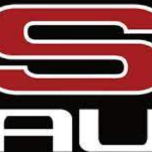Is Power (rwkw) Figure Everything? Why Are People So Hung Up On Kw Figures
Announcements
-
Latest Posts
-
Also, I logged some data from the ECU for each session (mostly oil pressures and various temps, but also speed, revs etc, can't believe I forgot accelerator position). The Ecutek data loads nicely to datazap, I got good data from sessions 2, 3 and 4: https://datazap.me/u/duncanhandleyhgeconsultingcomau/250813-wakefield-session-2?log=0&data=7 https://datazap.me/u/duncanhandleyhgeconsultingcomau/250813-wakefield-session-3?log=0&data=6 https://datazap.me/u/duncanhandleyhgeconsultingcomau/250813-wakefield-session-4?log=0&data=6 Each session is cut into 3 files but loaded together, you can change between them in the top left. As the test sessions are mostly about the car, not me, I basically start by checking the oil pressure (good, or at least consistent all day). These have an electrically controlled oil pump which targets 25psi(!) at low load and 50 at high. I'm running a much thicker oil than recommended by nissan (they said 0w20, I'm running 10w40) so its a little higher. The main thing is that it doesn't drop too far, eg in the long left hand fish hook, or under brakes so I know I'm not getting oil surge. Good start. Then Oil and Coolant temp, plus intercooler and intake temps, like this: Keeping in mind ambient was about 5o at session 2, I'd say the oil temp is good. The coolant temp as OK but a big worry for hot days (it was getting to 110 back in Feb when it was 35o) so I need to keep addressing that. The water to air intercooler is working totally backwards where we get 5o air in the intake, squish/warm it in the turbos (unknown temp) then run it through the intercoolers which are say 65o max in this case, then the result is 20o air into the engine......the day was too atypical to draw a conclusion on that I think, in the united states of freedom they do a lot of upsizing the intercooler and heat exchanger cores to get those temps down but they were OK this time. The other interesting (but not concerning) part for me was the turbo speed vs boost graph: I circled an example from the main straight. With the tune boost peaks at around 18psi but it deliberately drops to about 14psi at redline because the turbos are tiny - they choke at high revs and just create more heat than power if you run them hard all the way. But you can also see the turbo speed at the same time; it raises from about 180,000rpm to 210,000rpm which the boost falls....imagine the turbine speed if they held 18psi to redline. The wastegates are electrically controlled so there is a heap of logic about boost target, actual boost, delta etc etc but it all seems to work well
-
hahah when youtube subscribers are faster than my updates here. Yes some vid from the day is up, here: Note that as with all track day videos it is boring watching after the bloopers at the start. The off was a genuine surprise to me, I've literally done a thousand laps around the place and I've never had instability there; basically it rolled into oversteer, slipped, gripped and spat me out. On the way off I mowed down one of the instructor's cones and it sat there all day looking at me with accusing cone eyes as I drove past. 1:13:20 was my fastest lap, and it was in the second session, 3rd lap. It (or me!) got slower throughout the day as it got hotter.
-
It sounds like you want what the Toyota Landcruisers have for their roof racks. Wanna know what you end up with? Rust holes in the roof, and water everywhere...
-
Discovered today that if I select reverse first and take my foot off the brake, then select drive, the drive indicator light works and so does the tiptronic gear indicator.
-
Ok so after much research and talking with knowledgeable people I've got my turbo conversion done and it's all running great other than 1 small issue. Car has remained auto with the na auto and tcm, I've used a stagea ecu with. NIstune board and everything is great other than my gear selection on the dash. It illuminates park, reverse, neutral, 3rd and 2nd. But nothing drive or what gear your in when you pop it into tiptronic. I'm sure there is maybe 1 wire in the ecu plug I need to move to rectify this. Does anyone here have any ideas? Cheers guys
-



Recommended Posts
Create an account or sign in to comment
You need to be a member in order to leave a comment
Create an account
Sign up for a new account in our community. It's easy!
Register a new accountSign in
Already have an account? Sign in here.
Sign In Now